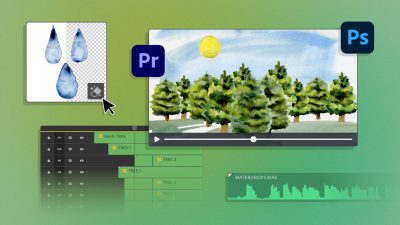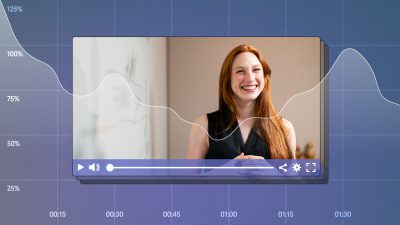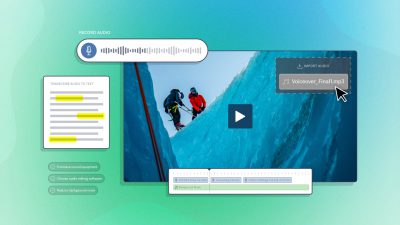There is no shame in TV marathons. As a novice videographer, TV shows are great case studies and sources of inspiration. Here are seven shows that, in our humble opinion, have done it right. Feel free to indulge in some binge-watching, but be sure to take a few notes.
1. Orange is the New Black
If you don’t already have a Netflix subscription, Orange is the New Black (OITNB) may be the best new reason to get one. The show is an intricately woven narrative, threaded together by the relationships, events, and emotions of the women incarcerated in Litchfield prison.
Based on the memoirs of Piper Kerman, OITNB is an example of the importance of pre-production research. Jenji Kohan, the show’s creator, did her research. She started by asking Kerman a slew of questions, including what the prison’s toilets looked like, then went for prison visits and interviewed speakers.
Every character, relationship, story line, and detail had to be plausible given the constraints of the setting. Would a prisoner urinate on the floor? Yes — definitely, Kohan found out. Kohan told Paste Magazine that she and her team completely immersed themselves in prison culture in order to make the show. While this type of legwork can be grueling, the success of OITNB shows that research is worth the effort.
2. The Office
For American audiences, The Office was a departure from the glossy, fabricated feel of traditional TV sitcoms. There is no laugh track, nor a live studio audience. The show is shot with a single camera in a mockumentary style.
In fact, the Office’s camera is an essential part of this TV show. Characters look directly at the screen while reflecting on the events of the episode, as if The Real World’s latest location was an office in Scranton.
The camera work is not slick. Instead, it’s intentionally rough, implying that some guy’s cousin is filming the documentary.
The style of The Office is within the reach of novice videographers. You do not have to know all the tricks in the film studies book to make interesting videos that audiences will love. Think about the resources and skills you have, and how you can use them to add character to your storytelling.
3. Game of Thrones
For devoted George R. R. Martin fans, Game of Thrones (GoT) is a successful retelling of a beloved series of novels. The show is complex and surprising, beautiful and brutal. The writers of the TV show have adeptly translated some of the best aspects of the novels, vividly recreating a world that lay only in the imaginations of the novels’ fans for years.
George R. R. Martin’s books take place in an incredibly intricate world, with an incredibly intricate plot. Even his most minor characters have depth. These elements, and an incredible production setup, are also what make the show so great.
Martin and the HBO writers keep viewers on their toes, taking characters in new, unexpected, and deadly directions. While the average videographer does not have the resources to shoot in locations like Malta or with a team of costume designers and weapon smiths, Game of Thrones is an excellent case study of how to grab an audience through story and character development.
4. How I Met Your Mother
How I Met Your Mother (HIMYM) is going into its ninth season this fall, an incredibly long run in TV time. HIMYM is a great example of playing with storytelling.
We meet Ted, the sensitive architect/philosopher protagonist in the prime of his life. The audience never meets the middle-aged Ted, but sits with his teenage kids, listening (sometimes just as reluctantly) to his retelling of the complicated story of how he met his wife.
The series is a departure from linear storytelling. The show, as well as each individual episode, begins from the end. The audience knows Ted finally falls in love, moves to the burbs, and has kids. There is no question of if, only the questions of how and with whom.
HIMYM is an exploration of the journey. The arcs of episodes are also revealed in a non-sequential order, from the perspective of multiple characters. Events are described and re-described, re-ordered, and then revisited in future seasons.
Take some cues from HIMYM while planning your video and play with the constructs of storytelling. Even a 3 minute video can use unconventional methods of storytelling to engage the audience.
5. Mad Men
The world of Mad Men is nearly flawless. From the pop culture references to the textures of the furniture, even down to newspaper headlines, the martini glasses of shrimp cocktail, and historical timing of weather fronts.
Each week, these details transport viewers to the New York of their imagination, one that they have seen in classic movies, or to the New York of their memories. The nostalgia that these details create is one of the reasons the show has cultivated such a devoted fan base.
Costumes and props are integral characters to good shows. You can use these details to tell a backstory, reveal information about characters, and set the tone for your video. Even short videos can benefit from details in a big way. Using details as storytelling devices can help eliminate unnecessary dialogue or action, saving you time when you sit down to edit.
6. Dr. Who
To say Dr. Who has a following is an understatement. Dr. Who has an army of followers, devoted to the time-bending travels of the latest incarnation of the Doctor.
Part of the show’s appeal is it’s campy, old school sci-fi feel. Dr. Who’s special effects look somewhat attainable, like you might be able to achieve similar results with some tape, a can of spray paint, and a bit of resourcefulness.
In fact, a number of convincing cardboard Daleks can be seen running around Sci-fi conventions. The show’s fans have spent countless hours recreating their favorite elements of the show: refrigerator box Tardises, working sonic screwdrivers, and convincing weeping angel costumes.
Videographers are often limited in resources, making special effects seem like a pipe dream. The ingenuity of these fans shows how accessible special effects, makeup, and prop design can be.
7. No Reservations
No Reservations is a no apologies narrative on culture and food. It shows the audience the exotic, while subversively challenging notions of what normal means.
No Reservations is an addictive journey for the senses. A barrage of the colors and sounds of crowded cityscapes, the serial documentary manages to pique all of the senses. The combination of Bourdain’s accounts with the footage of his journeys leaves viewers feeling as though they have just smelled, touched, and tasted traditional family meals in Cambodia, or street food in the labyrinths of Indian markets.
Historical, political, and social commentary flecks the descriptions of each episode, creating an honest, introspective look at culture and at Bourdain himself.
Bourdain’s cameramen are equally as adventurous; making food tantalizing and capturing small, important bits of the lives of the people Bourdain meets. Whether through words or camerawork, No Reservations illustrates the importance of playing to your audience’s senses. If your video draws heavily on a sensory appeals, take some notes from No Reservations. The show’s lesson: don’t just make a video, make an experience.
Are there any shows in particular you take cues from for your videos? What draws you to them? Share with us in the comments below!








